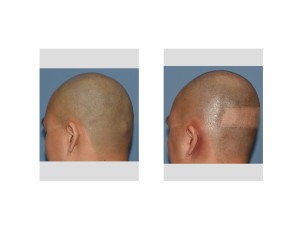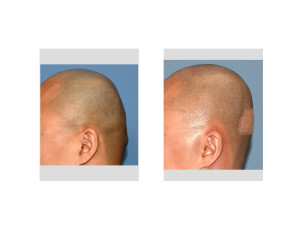Background: Flattening of the back of head can occur on one side or both sides for congenital reasons. When it occurs on just one side of the back of the head it is known as occipital plagiocephaly. It is not, however, just simple limited flattening of one side of the occipital bone. It is well known to be more of an overall twisting of the skull where numerous other craniofacial areas are affected as well. The opposite side of the back of the head, the ipsilateral ear and even the forehead can be altered based on the severity of the deformity.
By far and away the flat side of the back of the head is always the patient’s primary aesthetic skull shape concern. I have used every available onlay cranioplasty material to build up the flat side of the head. The custom skull implant approach using the patient’s 3D CT scan has proven to be superior for a variety of reasons. The exact shape of the deformity correction is determined before surgery, smooth edges of the implant around its perimeter are assured and the implant can be inserted through a small incision due to its flexibility. Because of these benefits it also shortens the time to perform the surgery.

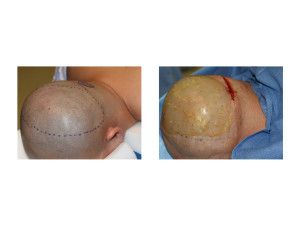
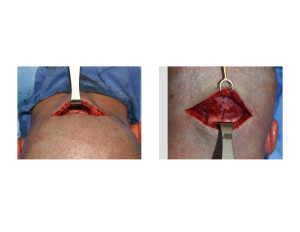
The scalp incision was closed in layers with resorbable sutures. No drain was used. The expected immediate change in the shape of the back of his head was seen. Prior to the placement of a head dressing, greater occipital nerve blocks were done using a long acting local anesthetic. (Marcaine)
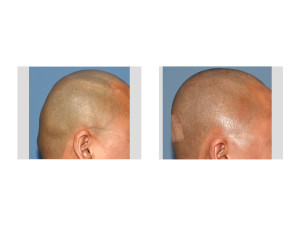
Highlights:
1) Congenital occipital plagiocephaly create a visible flattening on one side of the back of the head.
2) One-sided occipital augmentation is most predictably done using a custom occipital skull implant from a 3D CT scan.
3) A custom occipital implant is best introduced through a low horizontal scalp incision on the back of the head.
Dr. Barry Eppley
Indianapolis, Indiana



